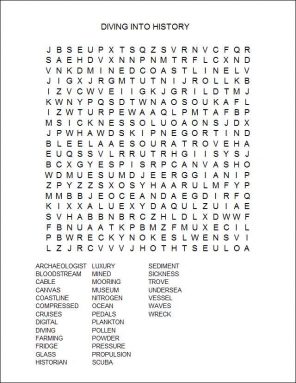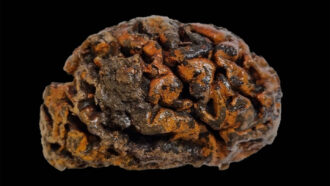Diving deep into history
Underwater archaeologists use high-tech tools to find and study sunken objects
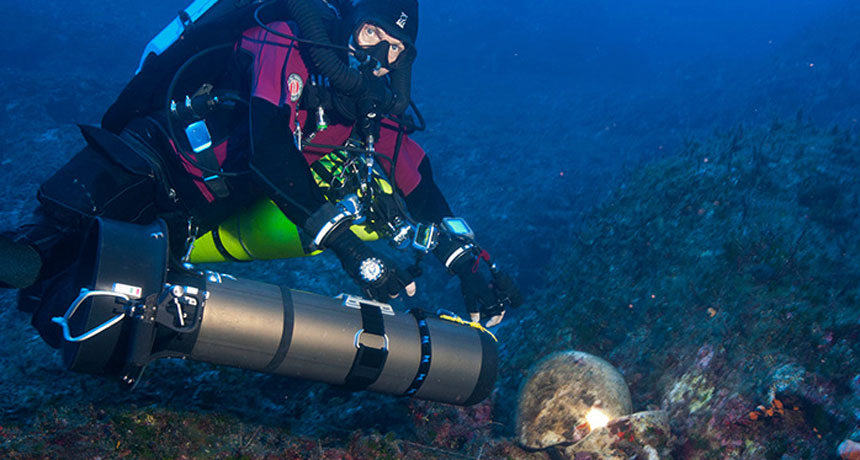
Divers have found many items at shipwrecks. Here, at Antikythera in the Mediterranean Sea, they uncovered many things, including this amphora (lower right) — a ceramic jar used to store and transport food.
Alexandros Sotiriou, EUA/WHOI
Cindy Van Dover knows a lot about the deep oceans. But she never expected to find a shipwreck more than 200 years old while she was hunting for sea creatures.
It was July 2015. Van Dover and other deep-sea biologists were cruising on a research ship off the coast of North Carolina. They were looking for a scientific mooring — a cable attached to the ocean floor more than 1.6 kilometers (1 mile) down. Instruments attached to the cable collected data on ocean currents as well as samples of tiny creatures called plankton. But the scientists spied something far more important — and exciting. They turned up piles of brick, wooden beams, glass bottles and a metal compass. It was a shipwreck, and it was probably 200 to 300 years old.
Two underwater vehicles that the biologists had brought to collect samples in deep water helped them find the wreck. First an undersea robot sent back pictures that looked like the missing mooring. Then two divers went down in a larger vehicle. At that point, they spied the ship’s remains on the seafloor.
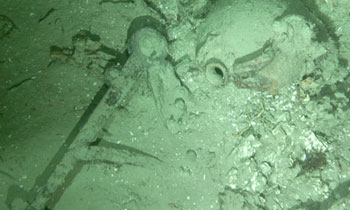
Archaeologists learn about the past by studying places where humans once lived or traveled. The underwater world is a good place to find clues to this. That’s especially true at downed vessels. “Shipwrecks are packets of information that help us understand ancient civilizations,” says Brendan Foley. He’s an archaeologist at the Woods Hole Oceanographic Institution in Massachusetts.
Until recently, scuba diving was the only way to explore underwater sites. Scuba divers breathe air that has been compressed into tanks strapped to their backs. But even explorers with special gear and training could only descend to at most 200 or 300 feet — and then only for minutes. Wrecks in deep water were unreachable.
But new equipment today helps divers go deeper and stay down longer. Underwater vehicles bring within reach zones that are too deep for scuba. And archaeologists are using advanced laboratory methods to analyze what they find. The metal in a ship’s anchor, or chemical traces of food inside a jar, can reveal where those objects came from. Even tiny bits of long-dead plants, buried deep underwater, can turn up big surprises about human history.
A surprise at sea
Van Dover directs the Duke University Marine Laboratory in Durham, N.C. She led the biology expedition that found the North Carolina shipwreck.
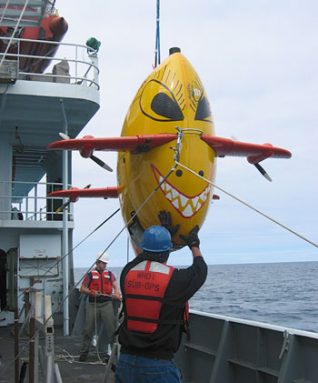
The research crew programmed Sentry to search the area where they thought the mooring should be. One image showed something that looked like a cable. Two divers then went down in a research submarine named Alvin for a closer look. “It turned out to be a big chain that led to the wreck,” says Van Dover. “That’s when we knew we had a pretty old boat.”
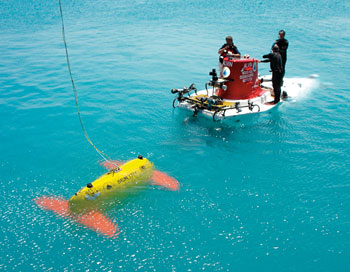
What does surprise Van Dover is that the wreck went undetected for so long. It lies only about 100 meters (330 feet) from a site she studied and mapped on other cruises. That’s only slightly shorter than a football field. “But we never caught the wreck,” she says. “That shows how many secrets there are in the deep seas.”
Ancient grains
Like shipwrecks, areas near coastlines can host treasures.
Humans have lived along coasts for thousands of years. But Earth’s coastlines change. Several times in the past, the planet’s temperature cooled and some of the water in the oceans froze. Global sea levels fell, exposing new land. People settled in these coastal areas. Later, ice sheets melted and settlements near the shore were flooded.
The flooded sites now contain clues to those past settlements.
Robin Allaby is a plant scientist at the University of Warwick in Coventry, England. He studies when people started growing crops instead of relying on hunting for food. He tries to reconstruct human history from the genetic material of long-buried plants and plant parts.
Scientists can do this because plants that have been cultivated and farmed as crops will change, or evolve, differently from their wild ancestors. To get corn with big cobs and lots of kernels, for example, farmers would have saved seeds from the best plants each year to raise in the next season. Those prized traits reflect changes in the corn’s genes.
Scientists are interested in this kind of information because the switch from hunting to farming can also trigger other changes. Instead of roaming in small groups to find prey, people may stay in one place and live in larger communities. But that shift isn’t easy. Hunters eat a lot of meat. Farmers eat more plants, which lack some key nutrients, such as iron. “When you look at history, you see a lot of health problems during these transitions,” Allaby notes.
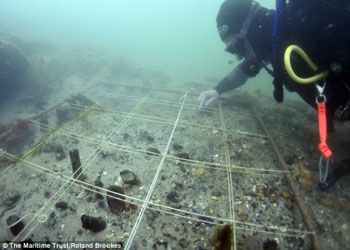
The 8,000-year-old soil was sealed under dense sediment. “We knew it had not been disturbed,” Allaby says. The samples contained DNA from ancient plants. To identify the plants, the scientists used a laboratory method called DNA sequencing. They looked at fragments of the DNA to find patterns that were unique to certain species, such as oak trees. Most of the DNA came from plants and trees that were common in England 8,000 years ago. But there also was a big surprise: Some DNA came from two types of farmed wheat.
Why would that be startling? Historians think people didn’t begin farming in Britain until about 6,000 years ago. Before that time, they hunted, fished and collected edible plants. Growing crops began in the Middle East and only slowly caught on across Europe. But the 8,000-year-old wheat DNA at this underwater site matched wheat that had been growing in the Middle East. That meant farming might have reached England at least 2,000 years earlier than historians had believed!
But if farmers had raised wheat at Bouldnor Cliff, the soil samples also should have contained wheat pollen. Pollen is a powder of “male” cells that plants release when they flower. When wind or a pollinating creature, such as a bee, carries pollen to other plants, it fertilizes the female parts of those plants. The scientists did not find wheat pollen. So Allaby says the wheat in their soil samples may not have grown at Bouldnor Cliff. He thinks it might have come from traders who crossed over from Europe.
That’s still important because it would show that Britain was not cut off from the rest of Europe 8,000 years ago. “The people at Bouldnor Cliff were hunter-gatherers, but they were exchanging goods with farmers and interbreeding with them,” Allaby says. The scientists published their findings in Science in February 2015.
Return to Antikythera
People have sailed the waters of the Mediterranean Sea for thousands of years. Foley calls the Mediterranean Sea bottom “the biggest museum gallery in the world.” He is working with Greek archaeologists there to explore a massive wreck off the Greek island of Antikythera (An-tee-KITH-air-uh). The ship there sank more than 2,000 years ago. It carried many expensive objects, including statues, glass bowls, perfume jars, coins and jewelry.
Reaching the wreck is hard because it lies 55 meters (180 feet) below the water’s surface. That’s deep enough to fit an 11-story office building. Normally, even trained divers can only safely stay at that depth for a few minutes. But Foley and his team are using advanced equipment that gives divers enough time deep underwater to map and excavate the huge wreck.
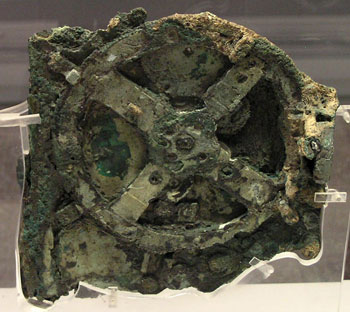
No one else tried to reach the Antikythera wreck until the 1970s, when Jacques Cousteau (ZHOCK koo-STO), the famous French oceanographer, dove there. His crew found more items, including coins and jewelry. But even with scuba gear (which Cousteau had helped to invent), they could only spend about 10 minutes at the wreck on each dive. Much of the ship’s cargo has never been raised from the deep.
Foley and his colleagues want to bring up more of that cargo and figure out what kind of ship carried it. In 2014, they used cameras on an underwater robot to make a three-dimensional digital map of the site. It led divers to more goods buried in the sediment. Among their finds was a 2-meter (more than 6-foot) bronze spear. Work will continue at the site for the next five years.
Diving to the wreck is challenging because humans did not evolve to breathe underwater. The compressed air in scuba divers’ tanks contains a mix of mostly nitrogen and oxygen. When we inhale, our bodies use the oxygen to make energy. Our bodies don’t use nitrogen from air, so we exhale most of it, along with carbon dioxide and any unused oxygen. A tiny bit of the nitrogen dissolves into our bloodstream, but it does not have any effect.
But when a diver swims underwater, the water pushes down on their body. That extra pressure forces more nitrogen from their lungs into the bloodstream and tissues than would be absorbed at the surface. The longer a diver stays underwater and the deeper he goes, the more nitrogen his body absorbs.
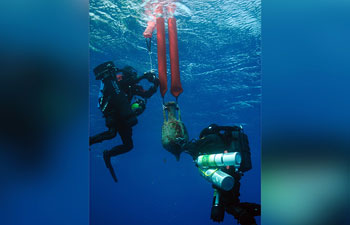
To spend more time underwater, divers at the Antikythera wreck today use special gas mixtures that do not cause decompression sickness. “You set a computer system to maintain the right level of oxygen throughout your dive,” explains Edward O’Brien. He’s the diving safety officer at the Woods Hole Oceanographic Institution.
Divers at Antikythera also use systems called rebreathers. The mouthpiece on normal scuba diving equipment lets the gases that divers exhale bubble up to the surface. But rebreathers capture them, scrub out the carbon dioxide and reuse most of the oxygen. With rebreathers and mixed gas supplies, divers at the Antikythera wreck can spend up to 90 minutes underwater.
A ‘space suit’ for the ocean
Soon divers may be able to extend their trips further, spending hours at Antikythera. A new device, known as an Exosuit, should make this possible. It looks like a space suit except that it has a hard aluminum shell. The air pressure inside the shell is the same as at the surface, so divers wearing it can descend some 300 meters (1,000 feet) underwater without having to worry about decompression when they resurface.
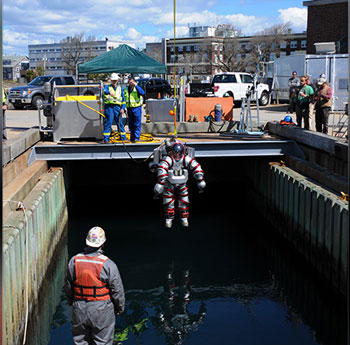
Foley calls the ship “the Titanic of the ancient world.” He believes it may have been a grain carrier. Ancient Greeks and Romans built these huge vessels to ferry tons of wheat and barley across the Mediterranean. They also carried passengers and luxury goods.
To support his theory, Foley wants to look for ancient grain samples in sediments around the wreck. The archaeologists also will analyze the different elemental forms, or isotopes, of lead in the ship’s anchors to figure out where the metal had been mined. Those studies could reveal the ship’s mission and where it was made.
Based on his own studies and experience searching for shipwrecks, Foley believes many more wrecks are waiting to be found. Using underwater robots, he is scanning and mapping big sections of the Mediterranean to estimate how many wrecks lie there.
The United Nations Educational, Scientific and Cultural Organization estimates that there may be more than 3 million shipwrecks scattered along the ocean floor. “There are easily 750,000 shipwrecks from ancient times on the deep seafloor. We’ve discovered less than 1 percent of them,” he says. “I hope what we find will inspire more scientists to come along and search for others.”
Power Words
(for more about Power Words, click here)
agriculture The growth of plants, animals or fungi for human needs, including food, fuel, chemicals and medicine.
aluminum A metallic element, the third most abundant in Earth’s crust. It is light and soft, and used in many items from bicycles to spacecraft.
Antikythera wreck A massive shipwreck off the Greek island of Antikythera (An-tee-KITH-air-uh). The wreck is especially known for a machine found on it known as the Antikythera Mechanism. The machine has more than 30 bronze gears and shows the phases of the moon and positions of the planets that ancient Greeks knew about.
archaeology The study of human history and prehistory through the excavation of sites and the analysis of artifacts and other physical remains. Scientists who work in this field are known as archaeologists.
biology The study of living things. The scientists who study them are known as biologists.
carbon dioxide A gas produced by all animals when the oxygen they inhale reacts with the carbon-rich foods that they’ve eaten.
chemical A substance formed from two or more atoms that unite (become bonded together) in a fixed proportion and structure. For example, water is a chemical made of two hydrogen atoms bonded to one oxygen atom. Its chemical symbol is H2O. Chemical can also be an adjective that describes properties of materials that are the result of various reactions between different compounds.
compression Pressing on one or more sides of something in order to reduce its volume.
cultivate To prepare land for growing food or to nurture the growth of a plant.
decompression (in diving) A process in which scuba divers rise slowly from deep water to the surface to allow nitrogen to escape slowly from their bodies. Decompression sickness, also known as “the bends,” occurs when nitrogen escapes from body tissues too quickly. It can cause joint pain, spinal injury, and even death.
digital (in computer science and engineering) An adjective indicating that something has been developed numerically on a computer or on some other electronic device, based on a binary system (where all numbers are displayed using a series of only zeros and ones).
DNA (short for deoxyribonucleic acid) A long, spiral-shaped molecule inside most living cells that carries genetic instructions. In all living things, from plants and animals to microbes, these instructions tell cells which molecules to make.
DNA sequencing The process of determining the exact order of the nucleotides (As, Ts, Cs and Gs) within DNA.
fertilize (in biology) The merging of a male and a female reproductive cell (egg and sperm) to set in create a new, independent organism. (in agriculture and horticulture) To provide basic chemical nutrients for growth.
gene (adj. genetic) A segment of DNA that codes, or holds instructions, for producing a protein. Offspring inherit genes from their parents. Genes influence how an organism looks and behaves.
genetic Having to do with chromosomes, DNA and the genes contained within DNA. The field of science dealing with these biological instructions is known as genetics. People who work in this field are geneticists.
graduate student Someone working toward an advanced degree by taking classes and performing research. This work is done after the student has already graduated from college (usually with a four-year degree).
helium An inert gas that is the lightest member of the noble gas series.
isotopes Different forms of an element that vary somewhat in weight (and potentially in lifetime). All have the same number of protons but different numbers neutrons in their nucleus. As a result, they also differ in mass.
mooring In ocean research, a cable attached at one end to a weight on the seabed. Scientific instruments attached to the cable collect information. The free end of the cable is attached to a float. When researchers want to collect the data and samples, they send a signal that releases the cable from the ocean floor and it rises to the surface.
oxygen A gas that makes up about 21 percent of the atmosphere. All animals and many microorganisms need oxygen to fuel their metabolism.
nitrogen A colorless, odorless and nonreactive gaseous element that forms about 78 percent of Earth’s atmosphere. Its scientific symbol is N.
nutrient A vitamin, mineral, fat, carbohydrate or protein that a plant, animal or other organism requires as part of its food in order to survive.
oceanography (adj. oceanographic) The branch of science that deals with the physical and biological properties and phenomena of the oceans. People who work in this field are known as oceanographers.
oxygen A gas that makes up about 21 percent of the atmosphere. All animals and many microorganisms need oxygen to fuel their metabolism.
plankton A small organism that drifts or floats in the sea. Depending on the species, plankton range from microscopic sizes to organisms about the size of a flea. Some are tiny animals. Others are plantlike organisms. Although individual plankton are very small, they form massive colonies, numbering in the billions. The largest animal in the world, the blue whale, lives on plankton.
pollen Powdery grains released by the male parts of flowers that can fertilize the female tissue in other flowers. Pollinating insects, such as bees, often pick up pollen that will later be eaten.
pressure Force applied uniformly over a surface, measured as force per unit of area.
propulsion The act or process of driving something forward, using a force.
rebreather A device advanced scuba divers use to remove carbon dioxide from their exhaled breath and recycle its oxygen content, allowing them to extend their time underwater.
robot A machine that can sense its environment, process information and respond with specific actions. Some robots can act without any human input, while others are guided by a human.
scuba diving A form of underwater diving in which a person carries special equipment in order to breathe, including a tank of air and a breathing mask. The word scuba is short for self-contained underwater breathing apparatus.
sediment Material (such as stones and sand) deposited by water, wind or glaciers.
sonar A system for the detection of objects and for measuring the depth of water. It works by emitting sound pulses and measuring how long it takes the echoes to return.
sponge A primitive aquatic organism with a soft porous body.
Word Find (click here to enlarge for printing)
